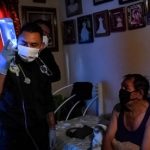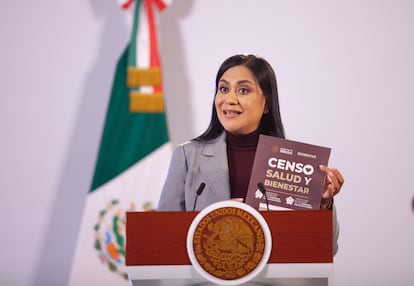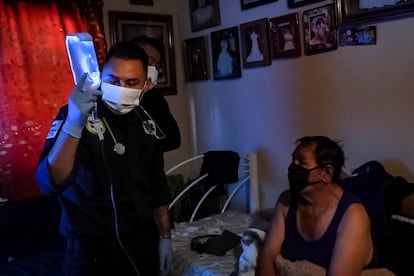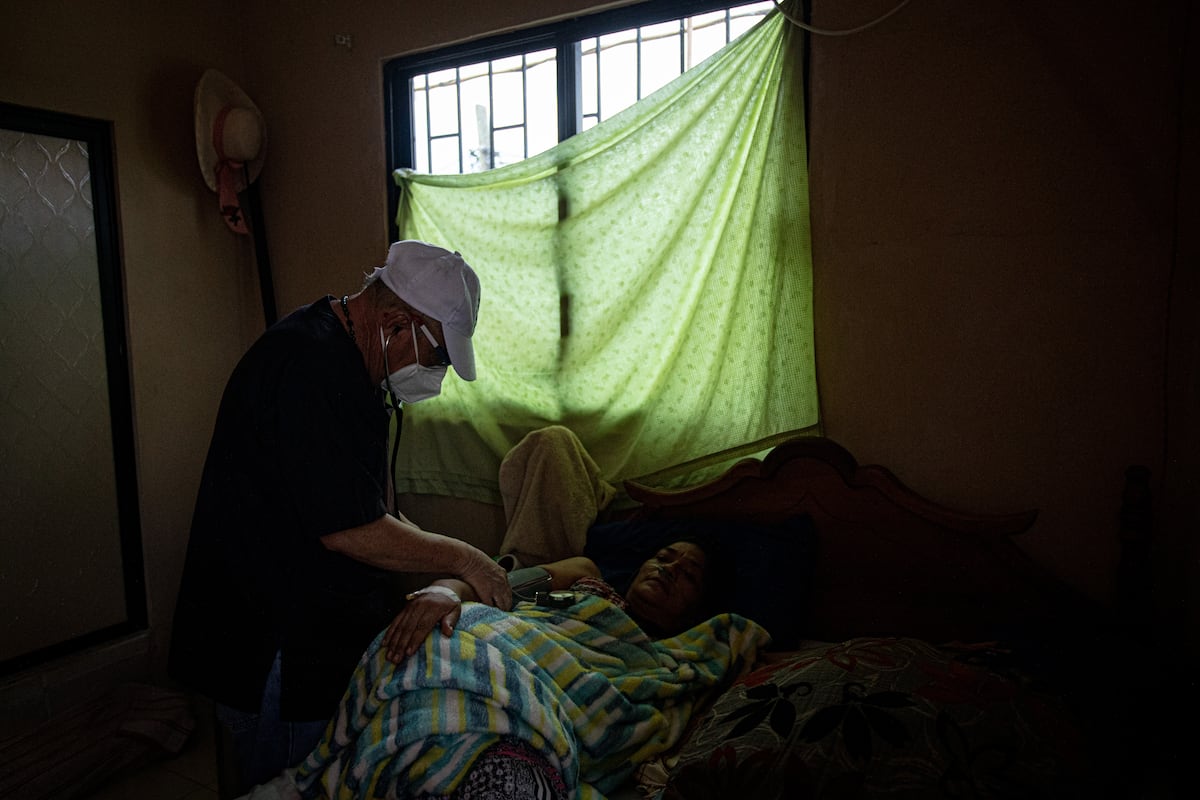


Mexico has some 13.6 million older adults and people with disabilities who currently receive a pension from the federal government. An attempt will be made to provide all of them with medical care at home in the next six-year term. Claudia Sheinbaum launched her ambitious health plan this Monday, which will have a budget of 7,000 million pesos for next year. In the three remaining months of 2024, the president has ordered a census of this population to be carried out, with the aim of knowing their medical needs, and to hire 21,500 nurses and doctors. The proposal suggests that by January the program can be launched throughout the country. With this plan, the new Executive aspires to improve the quality of life of those who benefit from primary care at home, while at the same time freeing up the rooms of the overcrowded health centers.
Just as he had anticipated during the transition, Shienbaum will seek to guarantee access to health with a great commitment to prevention. The first step in the new Government’s health strategy begins this Monday. Starting this week and until December, the 20,000 national servants of the Ministry of Welfare will go out to conduct a house-to-house census of those who have medical needs. They will not go to all homes, but to those that are part of the registry of welfare pension beneficiaries, specifically older adults aged 65 and over and people who suffer from a disability. The registry amounts to 13.6 million people living in about 12 million homes.

The census will not just be a count, but an in-depth evaluation of the patients’ health and the type of life they lead. The nation’s servants will come with a questionnaire with 80 questions. On the one hand, they will be asked about the state of health, such as diseases they suffer from and their history, the vaccines they have, the clinical studies that have been done, the medications they take, the disabilities they have, the eating routine, physical activity that they have. make and emotional health. But they will also include personal data, that of the caregiver, the house in which they live, the education they have, their occupation and economic income, family relationships and the support network – to visit more frequently those who live alone -, leisure and recreation, violence and discrimination they have suffered.
With this information in hand, both the Ministry of Health and the Mexican Social Security Institute (IMSS) will design a personalized care scheme for each of the beneficiaries. Visits to each home will be every two months and each person will receive a record with which they can track their medical care and treatments. “All of this will reinforce the quality of life of these people” and “will contribute to desaturating hospital services,” he assured. David Kershenobichthe new Secretary of Health in the morning conference with Sheinbaum. The official has also detailed that nurses will be able to prescribe to patients the medications that have previously been authorized for them in the follow-up of these people. They will also be the link with other levels of care, in case a patient needs it.

To execute this entire health plan, the Government has announced that it will employ 21,500 nurses between October 21 and November 15, and also doctors, although it has not given the specific number of the number of these professionals that it will hire. Medical visits will begin in February, the Executive has assured, and the money will come from the IMSS, which will be favored by reducing its attention in the centers, and another part will come from a special item in the Expenditure Budget of the Federation for next year, pending if approved by Congress. “This is an example of strengthening the idea of preventive medicine and primary care as a very important strategy in the health sector,” Kershenobich noted. In addition to basic medical care, nurses will have the task of observing other aspects of daily life that impact health, the secretary detailed, such as “listening to them when they bathe, get dressed or see what they are eating.”
The new health plan is an attempt by the president to bring the Health at Home program to all of Mexico, which she implemented in Mexico City when she was head of Government. But the bet has different dimensions and will have new difficulties as it surpasses the limits of the capital. According to the numbers given by the Sheinbaum Administration, there will be one nurse for every 632 people. In order to visit all of them every two months, as designed, the healthcare professional will have to review 10.5 patients a day. The breadth of the program will be the first difficulty, but not the only one. The insecurity problems that some corners of Mexico present have caused other governments in previous years to have difficulties hiring doctors in places plagued by violence. Regarding this, the president pointed out this Monday that if necessary, the nurses will be accompanied by agents of the National Guard.

